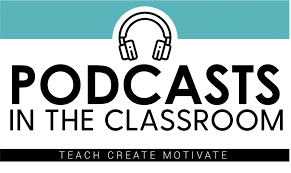
» Authentic materials—written, audio, and video materials students come across in everyday life—can be a wonderful addition to your teaching toolbox. Podcasts are an example of authentic material, and likely a format you and your students are familiar with. But why can they be incorporated into your class?
Why consider them?
Ohh, there are so many reasons. Essentially, podcasts cover practical content, interviews and current events, played out at real-time conversational speed with true-to-life accents. In short, this makes them great for training your students’ listening comprehension. They can be downloaded, listened to repeatedly, slowed down, sped up, shared, stitched together and cropped—and are available on every theme under the sun. (Really, from physics to fashion and cooking to cryogenics.) You can find them easily on Google, iTunes, and Play Store, plus on the websites of some large educational institutions and major broadcasters (such as the BBC and ABC).
Try these activities in class
- Listening comprehension—Prepare a short questionnaire for students. Allow them to scan the questions, and ask them to complete it following the episode.
- Listen for gist—Provide broad questions about general meaning: What is this episode about? Who is speaking? What are they talking about? Where are they? What’s the general mood of the conversation? Listen once to answer. Listen again, then compare with a partner. Compare open class.
- Introduce new language—Pre-teach difficult words, then listen to the episode writing the words on the board as they come. Listen again and identify them in context. Following this, reinforce them in your students’ lexicon by working on them in class using your favorite go-to vocabulary activities.
- Write a “letter to the podcaster.”—Ask students to write a response to the episode, addressed to its creator. (Depending on student interest and the podcast content, you may consider actually sending in these letters.)
- Bingo—Based on the podcast’s theme, ask students to write down ten words, expressions, or pieces of grammar they think they’ll hear. During the episode, students play bingo, crossing items off as they hear them. (At the start of the lesson you may provide a theme-specific list of items for students to choose between so they aren’t guessing cold.)

Podcasts are immensely popular worldwide. For language teachers, they represent a never-ending source of authentic materials to exploit in their classrooms to improve students’ listening comprehension, pronunciation, and vocabulary. Good luck as you start incorporating podcasts in your class! «
This article is from https://www.ef.com/wwen/blog/teacherzone/how-and-why-use-podcasts-class/
How (and why!) to use podcasts in class – EF TeacherZone Blog. (2019). Retrieved from https://www.ef.com/wwen/blog/teacherzone/how-and-why-use-podcasts-class/
